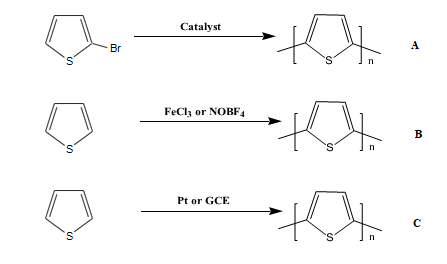*Correspondence to: Cassidy Carruthers, Department of Chemistry & Biochemistry, Laurentian University, Canada
Received: Apr 28, 2021; Accepted: May 12, 2021; Published: May 15, 2021
Citation: Carruthers C (2021) Detection of Pathogens using Polythiophenes. J Nanomed Nanotech Nanomat. 2: 111.
Copyright: ©2021 Carruthers C, et al. This is an open-access article distributed under the terms of the Creative Commons Attribution License, which permits unrestricted use, distribution, and reproduction in any medium, provided the original author and source are credited.
Abstract
The utility of polythiophenes as chemical and electrochemical sensors is assessed across the literature for the last decade. Polythiophenes can be used as an alternative method to traditional surface modifications for the detection of biomolecules. Moreover, polythiophenes amplify the optical and electrochemical signals allowing the facile recognition of target molecules. Their high conductivity and stability facilitate the design of polythiophene-based sensors for the detection of pathogens. The analytes observed in particular are Escherichia coli (E. coli) and Salmonella enterica. The optical and electrochemical property changes of polythiophenes resulting from the interactions with pathogens will be investigated.
Keywords: Polythiophenes; Pathogens; Fluorescence; Electrochemical sensors

Scheme 1: Synthesis pathway of polythiophenes
